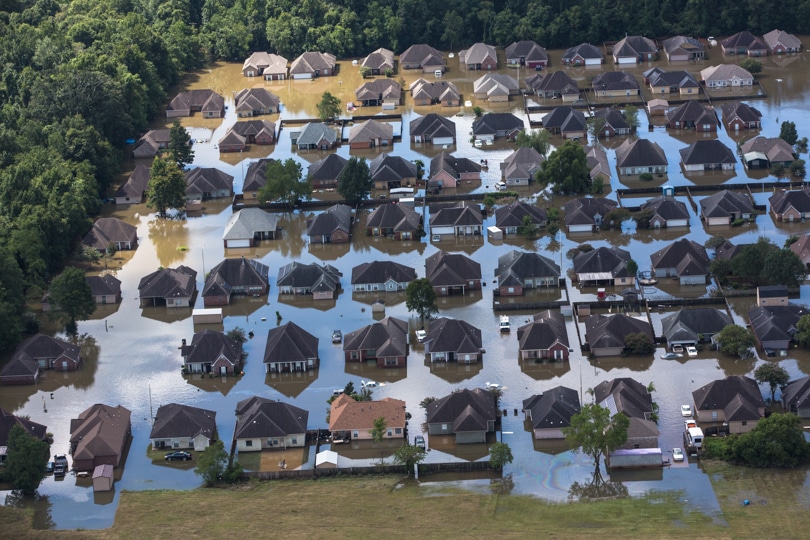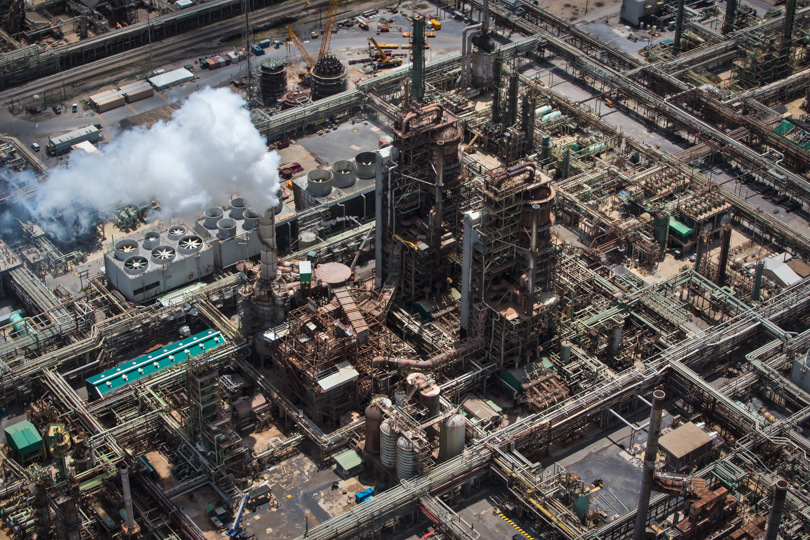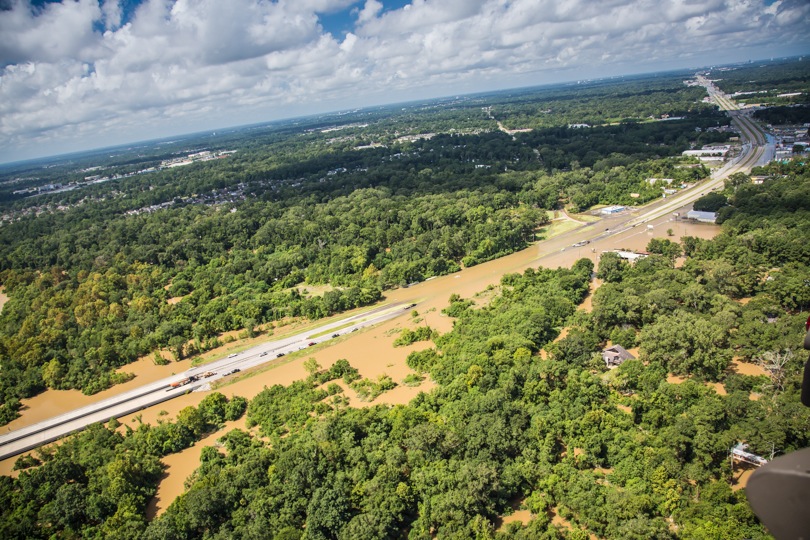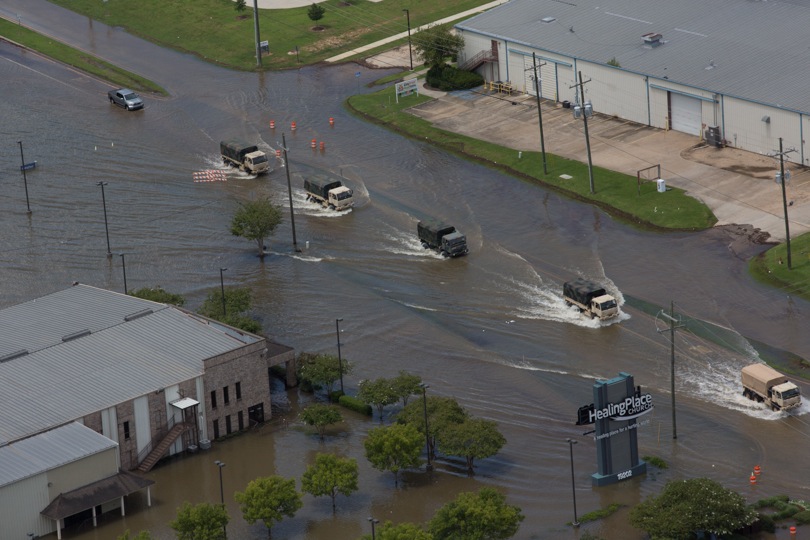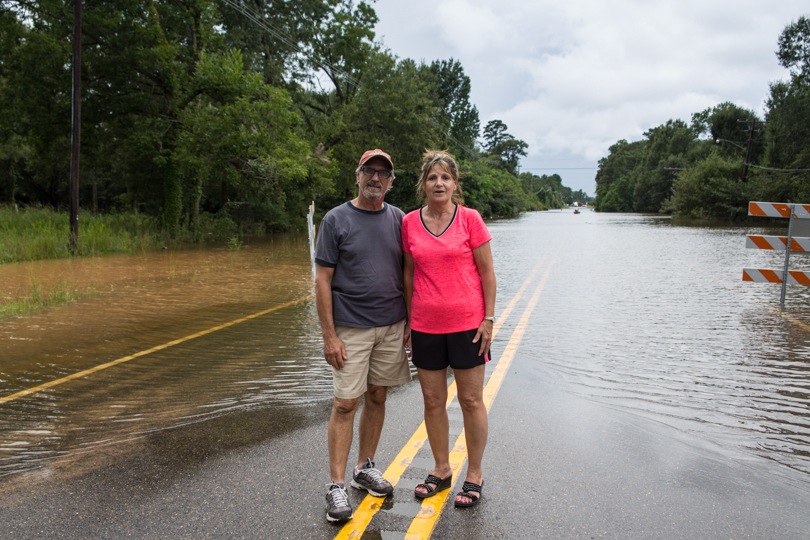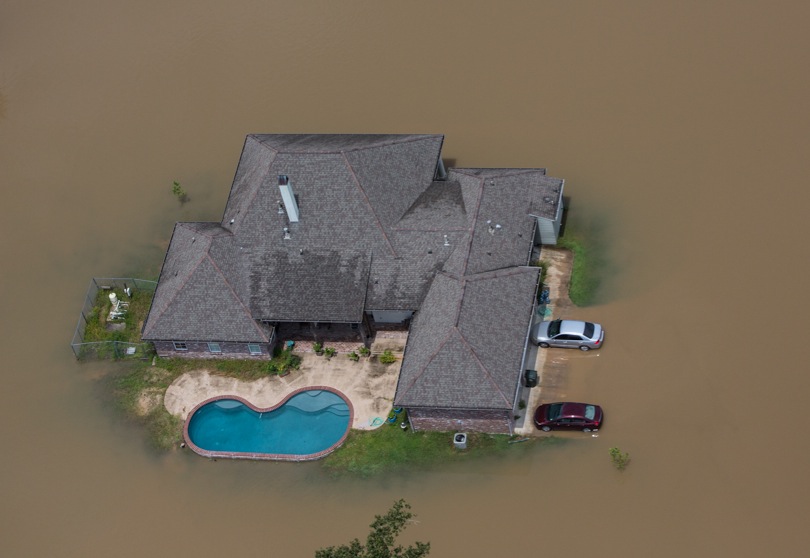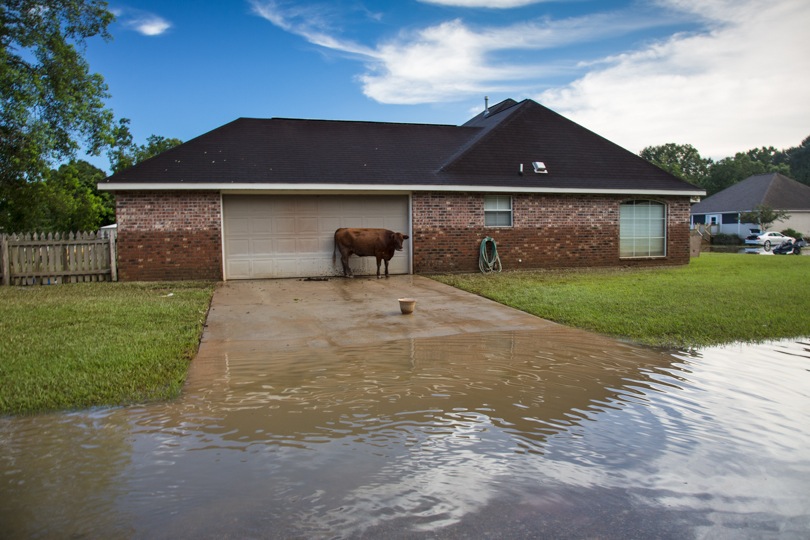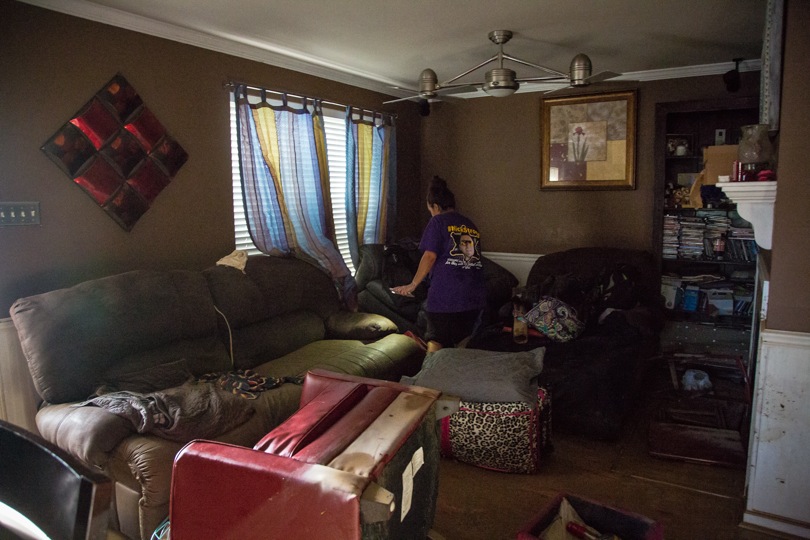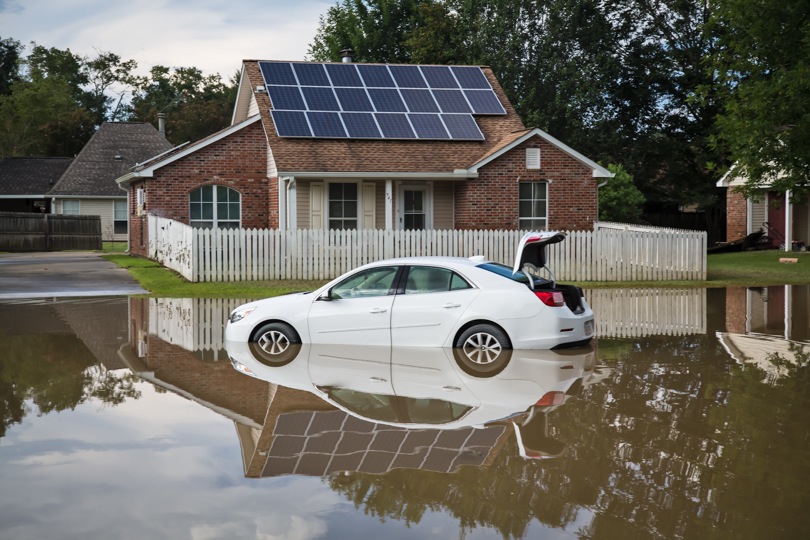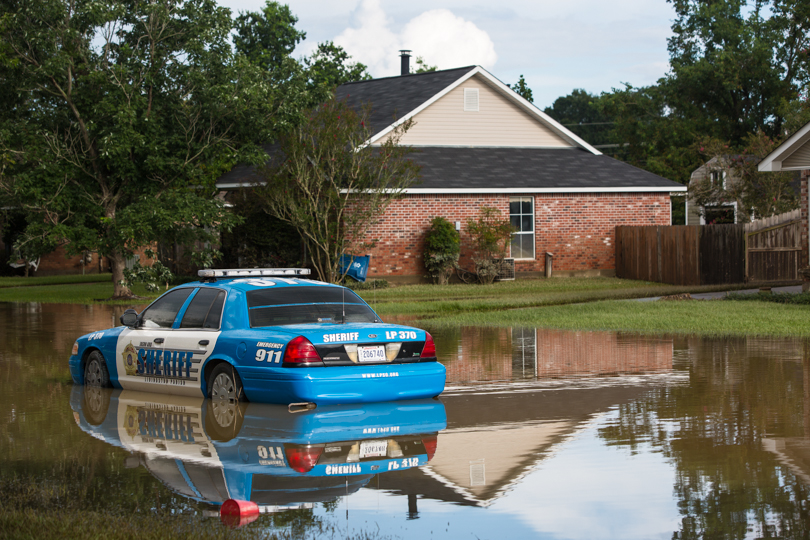The largest flooding event in Louisiana’s history — and the worst natural disaster to hit the United States since Hurricane Sandy in 2012 — is not over.
As I write, new areas in the southern part of the state are taking on water from rising creeks and bayous.
Last Friday, the greater Baton Rouge area received more than 30 inches of rain in less than 48 hours. Many rivers crested at record-breaking heights, and the run-off from those rivers is now flooding areas further to the south.
On Monday, three days after the rain event began, I flew with the Louisiana National Guard in a Black Hawk helicopter to survey the flood damage. From the air, I was able to take in the vast reach of the disaster.
We flew over the ExxonMobil Corp. refinery in Baton Rouge. Though I couldn’t see any standing water from the air, the refinery has shut down four production units and idled others as ongoing flooding threatened offsite facilities, including pumping stations and gas storage facilities, according to Bloomberg News.
ExxonMobil Refinery at Baton Rouge Threatened By Record Flooding In Louisiana. ©2016 Julie Dermansky
Reporting While Flooded
The national media is being criticized for being too slow at reporting on what is happening here. While some of the criticism is merited, I can say from personal experience that it is pretty tough to report on a flooded area while the waters are still rising.
Like many photojournalists, I tend to run toward danger, not away from it, taking calculated risks each time. But in this case, my car was too low to the ground to attempt going through floodwaters, which made getting out into the middle of this storm infeasible.
At first, I made the choice to watch the storm unfold on social media, instead of risking becoming part of the story myself by getting stuck in the floodwaters.
Water flooding closed all major roads in Louisiana that connect Baton Rouge to New Orleans. ©2016 Julie Dermansky
Louisiana National Guard move through highwater in Baton Rouge while on rescue missions following record breaking flooding. ©2016 Julie Dermansky
On Saturday, environmental activists and independent journalists Cherri Foytlin and Karen Savage found themselves in the middle of high water and, for a while, were trapped in Denham Springs, just east of Baton Rouge. They posted live updates on social media until they realized that what had been high ground would soon be underwater. Their reporting captured the unpredictable and destructive nature of floodwater.
By Sunday, most of the region between New Orleans and Baton Rouge was still under a flash flood advisory, and by the end of the day, all the roads between the New Orleans area and Baton Rouge, which cross multiple rivers and bayous, were closed.
Roads Closed
It wasn’t until Sunday that I ventured out to start documenting this disaster. I live north of New Orleans in St. Tammany Parish, which also flooded, but fortunately my place was spared any damage. Interstate 12, my usual route to Baton Rouge, had up to a thousand motorists trapped on it. They had to wait until later that evening to be rescued.
The rivers closest to me, the Tchefuncte River and Bogue Falaya River, had already peaked, so I decided to make my way west as far as I could on U.S. Route 190, a major artery between St. Tammany Parish and Baton Rouge through an area that had already experienced record-breaking flooding in March of this year.
Joyce and Joe Pennino find themselves unable to return to their home Sunday due to flood water across Rt. 190. ©2016 Julie Dermansky
I got as far as Robert, Louisiana, about 50 miles east of Baton Rouge, before coming to standing water too deep to drive through. There, I talked to people who had evacuated the area and were trying to return home to check out the flood damage. Some of them have homes that had flooded for the second time in a year. Joyce and Joe Pennino gazed out at the standing water, wondering what condition they would find their home in once they could finally return.
When the Cows and the Oil Both Come Home
Search and rescue efforts are still underway. An environmental assessment of the flooded area won’t be immediate, but already I could see patches of oil sheen all over the landscape.
Home surrounded by flood waters in French Settlement as waters continued rising in the days after the rain event.©2016 Julie Dermansky
The area along the Mississippi River between Baton Rouge and New Orleans (known as the “Petrochemical Corridor” by some and “Cancer Alley” by others) is lined with fossil fuel industry operations, and bound to be negatively impacted by any sizable weather event near the Louisiana Gulf Coast. Despite the risk of intensifying storms fueled by climate change and the threat of coastal erosion, the oil and gas industry continues to build new facilities that put those living near them at risk.
On Monday, after the flight with the National Guard, I drove as far west as I could on Route 190 and made it to Denham Springs, the area hardest hit by the flood. I met the DeBate family at a roadblock on Florida Boulevard. The police had let them through because just a little way into the floodwater there was a place they could launch their boat and it was clear their truck could make it. I joined the DeBates as they made their way across the water to recover some items and check out the damage to their home .
Sadly, most of what the DeBates had hoped to salvage was ruined. I shot some photos, which they could use for their insurance claim, and then slogged through the water-covered blocks in their neighborhood. Ribbons of oily rainbow sheen were visible on the water, leaking from cars and other flooded appliances. I was careful to keep an eye out for snakes, red ants, and spiders as well.
Cameron DeBate and family friend Victoria Ardoin joined me to check on how the homes of their neighbors had made out. We found a cow that had lost its way, and was making it self at home on someone’s driveway, and did what we could to alert authorities. When that failed, Ardoin found people via Facebook who promised to rescue the cow as soon as they could find a way into the area.
It’s nice to walk away with even one small happy story, since the death toll now stands at 13, and more than 40,000 homes have been reported damaged, leaving so many to endure countless hardships in the days ahead.
Lost cow in Denham Springs Louisiana after a record flood. ©2016 Julie Dermansky
Jessica DeBate returns to her home in Denham Springs Louisiana. ©2016 Julie Dermansky
Floods of Change?
In March, the National Weather Service had categorized a flood that had hit St. Tammany Parish as a 500-year flood. The current inundation has been called a 1,000-year flood. These determinations are based on the chances of several factors coming together to cause a weather event. These calculations don’t seem to have factored climate change in to the equation. As I drove, I heard on WRKR, an affliate of National Public Radio, that Louisiana had experienced eight separate “500 year storms” in less than two years.
On Saturday, at the height of the storm, Cherri Foytlin, while driving through rising waters, declared that while we talk about preventing climate change, the climate has changed.
Once she is finished dealing with her flooded home, she plans to continue her fight to slow down climate change. This coming Saturday Foytlin will join a group of activists trying to prevent the federal government from leasing more areas in the Gulf of Mexico for oil and gas drilling. Next week, the government plans to auction off 20 million acres along the Gulf Coast for this purpose.
Major weather events in Louisiana affect not just the state but the nation at large because they interfere with oil and gas production, as well as the transport of a wide range of goods along the Mississippi River and Interstate I-10, a major commerce route. As the climate continues to change, oil and gas operations will inevitably find it difficult to keep running when storms and other extreme weather, which are growing in intensity, strike the Gulf Coast.
Once the cleanup is well underway, perphaps those who stand firm in Louisiana on allowing the fossil fuels industry to continue to grow will change their outlook.
Solar Paneled home Flooded in Denham Springs Louisiana where they got 31 inches of rain that caused historic flooding. ©2016 Julie Dermansky
Stranded law enforcement vehicle at Denham Springs, Louisiana, during historic flooding. ©2016 Julie Dermansky
Main image: Flooding in Watson, Louisiana, following record breaking rainfall. ©2016 Julie Dermansky
Subscribe to our newsletter
Stay up to date with DeSmog news and alerts


